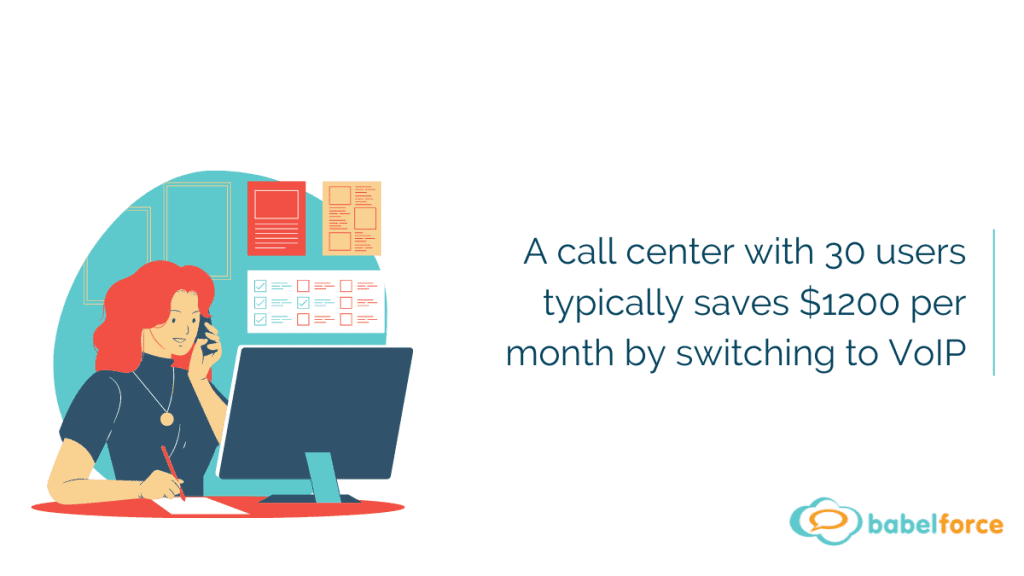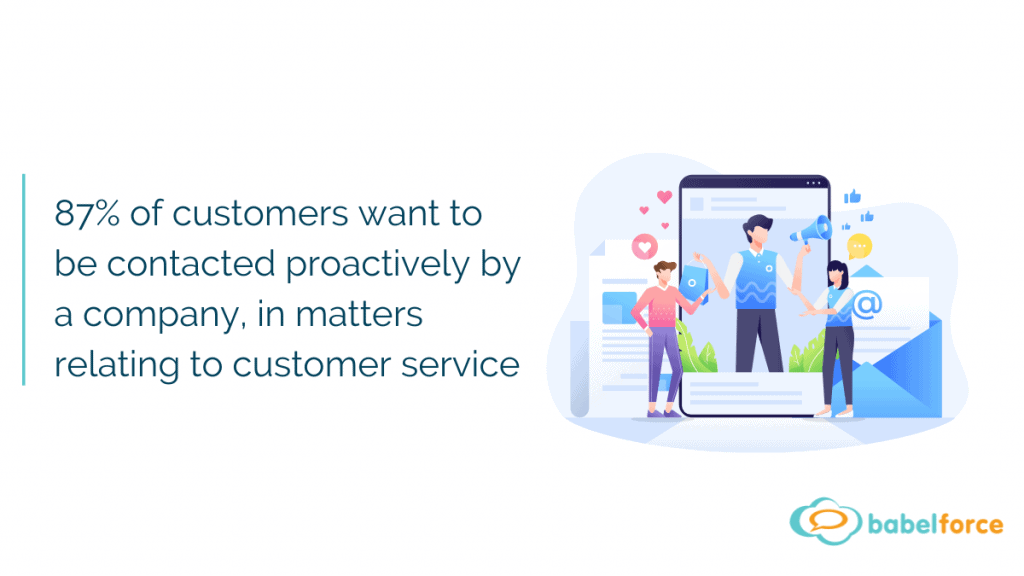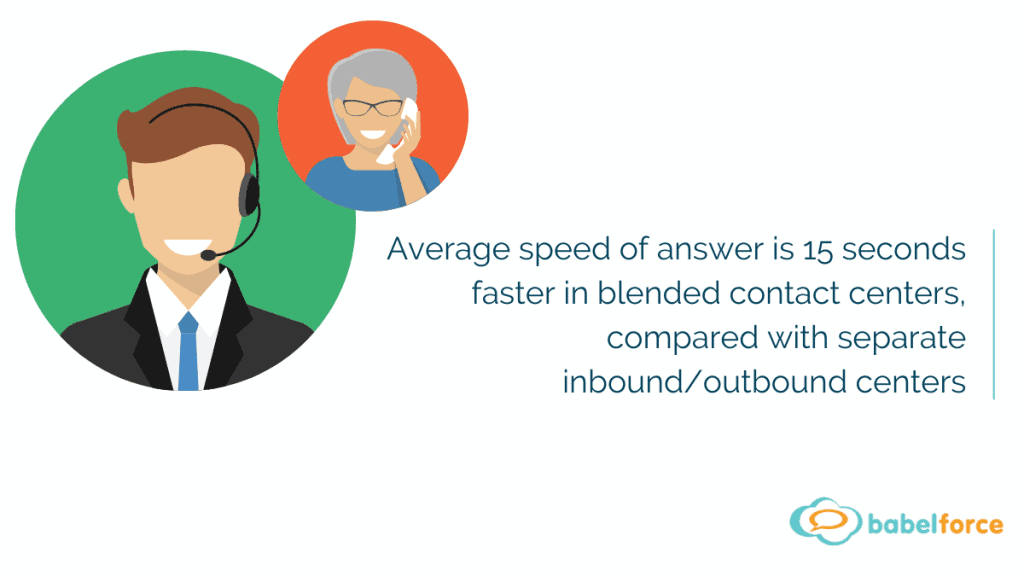You know that your contact center would seriously benefit from outbound services.
You’re well aware that providing proactive services can help you meet your customer’s needs, and that it’s relatively easy to implement.
The problem is that not everyone at your company is quite so keen, and it’s slowing down adoption.
But we’ve got your back.
This article contains all the information you need to overcome five common objections people have about outbound services in the contact center.
In this post:
- Outbound calls cost too much
- We don’t have enough agents
- We lack cold-calling skills
- There’s too much work involved
- We’ll waste time calling customers who don’t pick up
Five common objections to outbound services
#1 “Outbound calls cost too much”
The biggest objection is often cost – there’s a perception that outbound calls are expensive.
This myth is easy to dispel.
While outbound calls were expensive when they required dedicated phone lines, that isn’t the case anymore.
VoIP telephony – which means making calls over the internet – makes outbound services more affordable.
The exact costs depend on multiple factors,but generally, a call center with just 30 agents can save $1200 per month by switching to VoIP.
You’ll typically pay:
- A setup fee.
- A monthly fee for each VoIP line you use.
You can reduce set-up costs by using softphones – computer software programs that replicate a phone – instead of splashing out on physical VoIP-connected devices.
“But it’s still a cost we don’t need!”
If you hear this objection, it’s worth pointing out the savings that outbound contact can bring.
For example, proactively contacting customers about issues can significantly decrease incoming call volume.
Take the UK water supplier Anglian Water. The company sends automated messages to customers whenever there is a service disruption.
Receiving an explanation for why their water is off – often before they even know they have been affected – means fewer people call to ask what is happening.
The company estimates the cash value of the reduced call volume is around £100,000.

#2 “We don’t have enough agents for outbound services”
Not having enough agents is another common issue.
The CSuite are probably skeptical about moving agents from your current team to a new outbound center.
And they certainly don’t want to take on the cost of hiring new agents to handle outbound calls.
To overcome this objection, you need to switch how people think about what outbound calling is.
Old way of thinking: Outbound calls happen in a dedicated call center.
New way of thinking: Outbound calling happens in a blended contact center alongside inbound.
The latter option is far more efficient. You don’t need to hire new agents or rent new office space. Instead, your current agents fill their downtime by making outbound calls.
This increases your agent’s productivity. When inbound call volume is high, agents focus on handling these calls; they handle outbound services during lulls in activity.

#3 “We lack cold-calling skills”
In the past, the high cost of outbound calling meant call centers typically used them for sales only. The calls were too expensive to justify customer service related contact.
People who assume that outbound services are expensive are probably thinking of sales and nothing else.
But things have moved on. Outbound calling has plenty of other applications beyond making cold calls.
Some of these include:
- Customer service: Many types of outbound calls can improve CX. For example, virtual queuing lets customers hang up during busy times instead of waiting on hold. You then call them back when they reach the front of the queue.
- Proactive service: This is when you call or message customers about potential issues before they occur (or before the customer knows they exist). Think about how a bank calls a customer when they suspect a fraudulent transaction has been made on their card.
- Gathering feedback: Outbound contact allows you to contact customers to gain feedback about their experience with your product or service. It’s one of the best ways to find out how you can improve.
- Retention calls: Use retention calls if you offer a service with a recurring fee. Discover customers who are coming to the end of their contract period and ask if they need any help with their service. It’s an easy way to reduce churn.
Most of these use cases require the same skill set as inbound calling. You can offer outbound services without much more than basic agent training.

#4 “There’s too much work involved in prepping call lists”
There’s an easy answer for this objection: automation.
Choose the right contact center software and you can automate your outbound call processes to your exact business needs.
Here’s how it works:
- You create a dynamic outbound list that collects contact from multiple sources.
- You decide on rules that organize and prioritize outbound contact.
- Your dialler automatically makes calls based on these criteria.
One source of outbound contact could be calls waiting in a virtual queue. You set the system up so calls go out when an agent is free or inbound volume dips below a certain level.
Another source could be callback requests generated via an online form.
A speedy response to these requests is vital, so you should prioritize calls from this source.
You can even send different types of calls to specialized agents. Sales reps get sales calls while technical support reps get these queries.

#5 “We’ll waste time calling customers who won’t even pick up”
Low connection rates can be an issue. It’s pretty much unavoidable if you’re making cold calls.
But, a lot of the use cases for outbound services we’ve looked at – including virtual queuing, proactive service and surveys – have a far higher connection rate.
There’s a simple reason for this: these calls improve the customer experience, and in many cases, customers actively requested the call.
There’s no reason for people not to pick up the phone. Your connection rates will be far better than if you just deal with cold calls.
Outbound services = Another string in your bow
For contact centers, outbound services are simply another way to improve the customer experience.
Yes, you could stick to inbound service.
But doing this means you’ll miss out on use cases that genuinely offer value to customers. And new technology means these services are cheaper and more accessible than ever before.
In fact, for the right contact center, we can’t think of many reasons why you wouldn’t offer these services!





